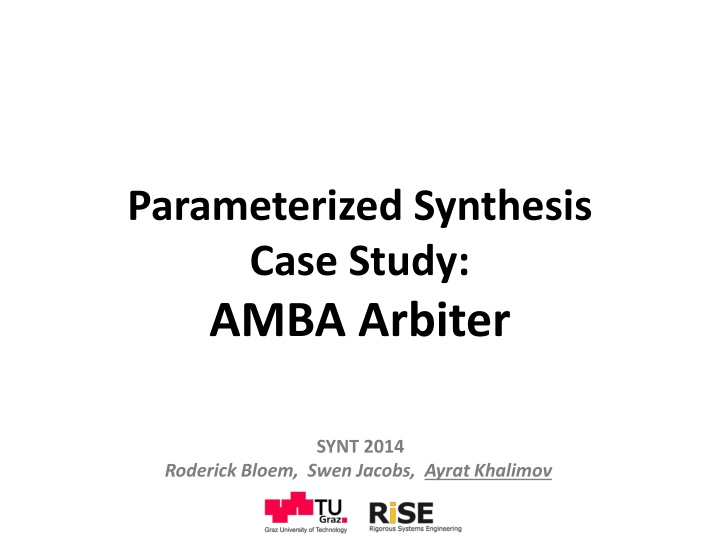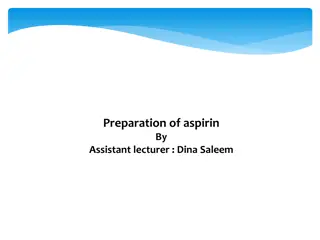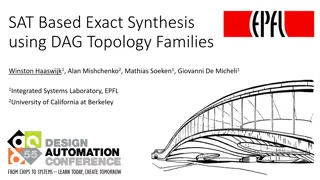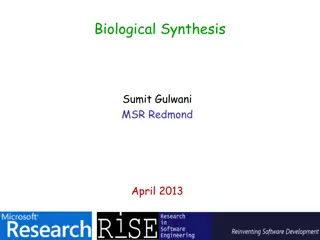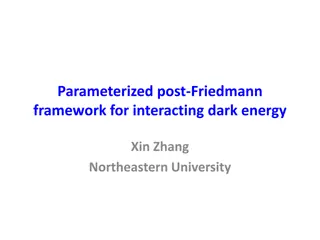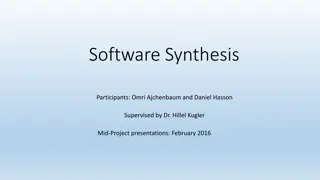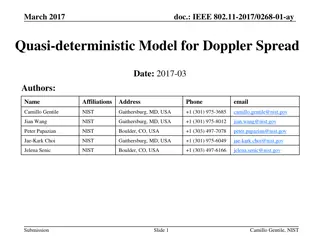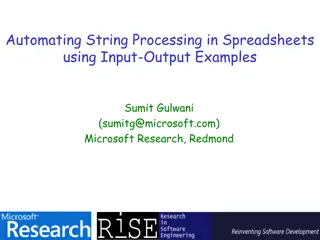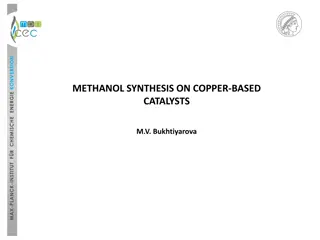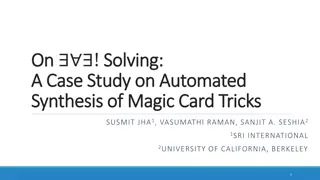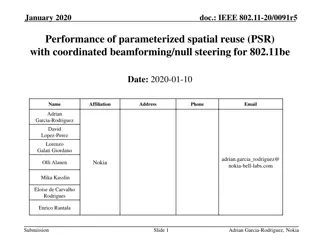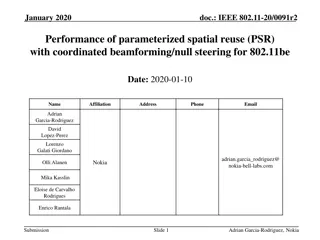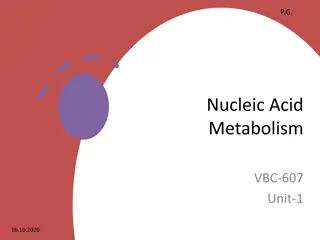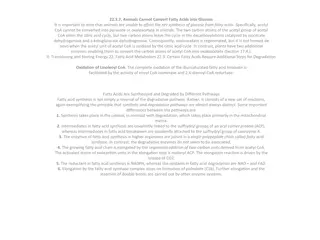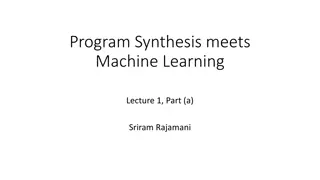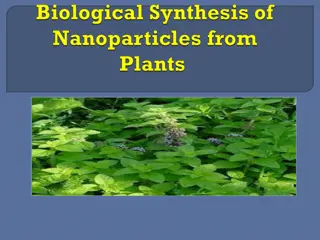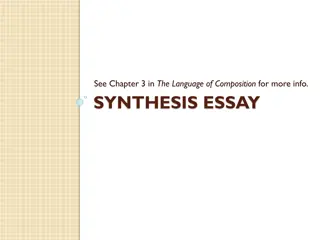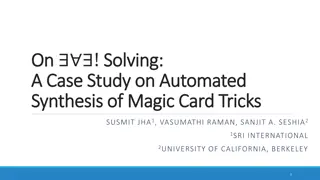Parameterized Synthesis Case Study: AMBA Arbiter
Delve into the intricate details of the AMBA Arbiter system through a comprehensive parameterized synthesis case study. Explore the challenges, existing approaches, optimizations, and experiments associated with this fascinating topic.
Download Presentation

Please find below an Image/Link to download the presentation.
The content on the website is provided AS IS for your information and personal use only. It may not be sold, licensed, or shared on other websites without obtaining consent from the author.If you encounter any issues during the download, it is possible that the publisher has removed the file from their server.
You are allowed to download the files provided on this website for personal or commercial use, subject to the condition that they are used lawfully. All files are the property of their respective owners.
The content on the website is provided AS IS for your information and personal use only. It may not be sold, licensed, or shared on other websites without obtaining consent from the author.
E N D
Presentation Transcript
Parameterized Synthesis Case Study: AMBA Arbiter SYNT 2014 Roderick Bloem, Swen Jacobs, Ayrat Khalimov
Outline What is AMBA? Why AMBA? What is Parameterized Synthesis Problem? Existing approach for Parameterized Synthesis Challenges for the existing approach Addressing the challenges Optimizations and Experiments Conclusion
What is AMBA Arbiter? m0 mn bus Arbiter s0 sk AMBA bus Masters, Slaves and the Arbiter: masters request from the arbiter an access to the bus, and communicate with slaves.
AMBA Arbiter: Simplified [J07] HBUSREQ[i] HLOCK[i] HBURST m0 mn Arbiter HGRANT[i], etc. HREADY Synchronous system ?0 gets the bus by default
GR1 Specification of AMBA [J07] ??????????? ??????????
Why AMBA Arbiter? Synthesis Time of AMBA Arbiter
WHAT IS PARAMETERIZED SYNTHESIS?
System Model: Token Rings Isomorphic processes Interleaving composition Token ring architecture
Parameterized Synthesis Problem [JB12] Given parameterized specification , find process implementation P: ?: ?? ? ? ? ? ?
Cut-offs in Token Rings [EN95,03] ? 2: ?? ?.??? ? ?2 ?.??? ? In addition, 1-indexed assumptions are allowed: Properties of the form ?.??? ? ?.??? ? cut-off is also 2
Cut-offs in Token Rings: Example ?: ? ???? ??????? ?(?????? ????) cut-off = 2 ? ?
Parameterized Synthesis Method[JB12] Synthesize Token Ring of cut-off size Process model calculate cut-off iLTL Cut-offs from [EN95] Bounded synthesis approach [SF07]
Challenges for the Existing Method ? 2: ?? ?.??? ? ?.??? ? ?2 ?.??? ? ?.??? ? Cut-offs are for interleaving systems, but AMBA is synchronous Global inputs Global outputs Special zero process
Synchronous AMBA Why not prove cut-offs for synchronous rings? - Because there are no process-independent cut-offs But cut-offs hold for fully asynchronous rings! - If a property holds in fully asynchronous token ring, then it holds in synchronous and interleaving rings
Global Inputs and Outputs Why not prove cut-offs for rings with global inputs? - Because Parameterized Model Checking of ?.??? ? ?.???(?) is undecidable where ???(?) and ???(?) talks about local and global inputs Localize the assumptions! - ?.??? ? ?.??? ? is replaced by ?. ??? ? ??? ? where ???(?) and ???(?) talks about local and global inputs
Special Zero Process i 0: ? ?????? ?????? ? ???? ? ??????? ?: ???? ? ?????? a. Special zero process b. Immediate reaction c. Global information
a. Special Zero Process i 0: ? ?????? ?????? ? ???? ? ??????? ?: ???? ? ?????? ?:? ?????? ?????? ? ????) and all other properties ?:? ???? ? ???? ? ??????? and all other properties synthesize synthesize combine into token ring 0
Final Specification (non zero process) ?: ???????????????? ? ???????????????(?) + token ring properties
Optimizations Synchronous Hub Abstraction[vmcai13] Hardcoding States with the Token [vmcai13] Decompositional Synthesis of Properties Optimization of SMT Encoding for Simple GR1
Synchronous Hub Abstraction [vmcai13] prev sends ? ???? ? Environment emulates the behaviour of the second process optimization is sound and complete
Hardcoding States with the Token [vmcai13] TOK TOK In AMBA processes do nothing without the token, hence: - One state without the token - All other states with the token optimization is sound and complete*
Decompositional Synthesis Synthesizing properties incrementally Add additional assumption on inputs - synthesize the model Relax the assumption on inputs - synthesize the model assuming the previous one Continue, until all additional assumptions are removed
Decompositional Synthesis: non-0-process Add assumption ??? ???????? ??? ?????? ?????? Assert transitions and outputs that satisfy the assumption
Decompositional Synthesis: non-0-process Relax assumption: consider ??? ???????? ??? ?????? Assert transitions and outputs that satisfy the assumption
Decompositional Synthesis: non-0-process Synthesize original specification
Decompositional Synthesis: Notes This paper does not analyze the optimization - Not clear how general it is does not work if: start with assumption ?????? ?????? and ?????
Direct Encoding of Simple GR1 ?? ? ??(?,?,? ) Strengthening: ? ? ? ? ?,?,? Can be encoded directly on SMT level optimization is sound but incomplete
Direct Encoding of Simple GR1: Notes All safety assumptions are simple GR1 8 out of 13 guarantees are simple GR1 57 vs 16 minutes (42 vs 24 states)
Conclusion We synthesized AMBA arbiter parameterized by the # of clients in token rings. We had to adapt the specification for cut-off results: - 2 simple safety assumptions - 2 liveness assumptions - 8 simple safety guarantees (13 in total) - + 4 token ring properties After that we synthesized a single process (hub abstraction) What are the key optimizations that made it possible? - separation of ???/ ??? states - decompositional synthesis
References [J07] Barbara Jobstmann, Applications and Optimizations for LTL Synthesis, 2007, PhD thesis, TU Graz
Note on mutual exclusion The token guarantees mutual exclusion: - ? ?????? ???? ensures mutual exclusion of grants
Synchronous AMBA Why not prove cut-offs for synchronous rings? For any given ? there is process: - count time between token receiving, and raises ????? if time ? - on token receiving immediately sends it further property of the form ?:? ?????? that proves that ? is not a cut-off. true false
Global Outputs HMASTER, HMASTLOCK, LOCKED, START, DECIDE different ways to define global outputs via process states we introduce local output for each global output and use local version instead of global, e.g.: - STATE -> STATE[i] in the specification
Immediate Reaction, Global Information Replace if no requests then next moment zero process grants with - no requests then next moment if zero process receives the tokenit grants Global information: - introduce new global input ??_??? and assume: ?: ? ???????? ??_???
4b. Immediate Reaction ?: ? ??????? ?: ???? ? ?????? is replaced by i: G TOK i X TOK i i: HBUSREQ i X HGRANT[i]
Example Parameterized specification ?: ?: ? ???? ? ?????? and ? ?: ? (?????? ??????) ? ??? ? ?? ?: ?? ?? Yes: ???? ??? ????? ????? ??? ????? ????? ? ???? ? ? ? ?
Direct Encoding of Simple GR1: Notes All safety assumptions are simple GR1 8 out of 13 guarantees are simple GR1 Direct encoding Encoding via automata automaton = 24 states synthesis = 16 minutes: - 14 min checking UNSAT - 2 min checking SAT automaton = 42 states synthesis = 57 minutes: - 53 min checking UNSAT - 4 min checking SAT
